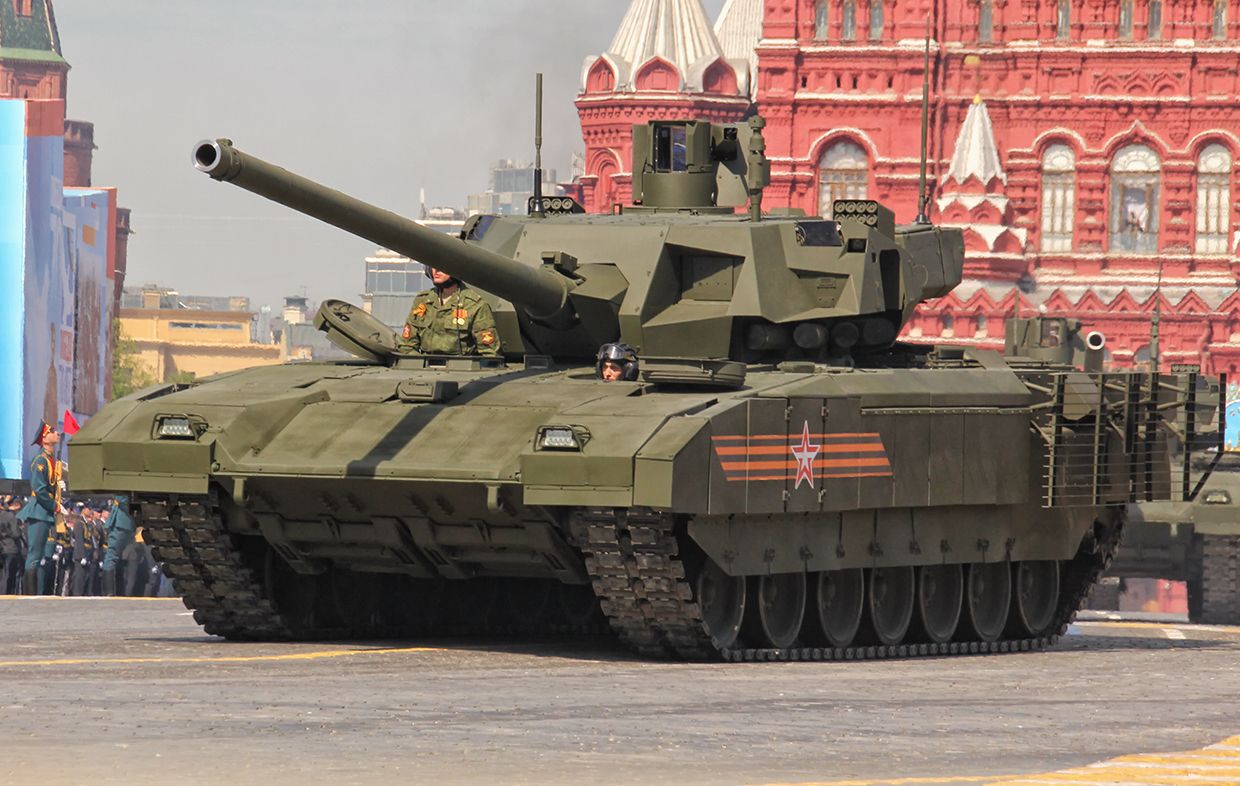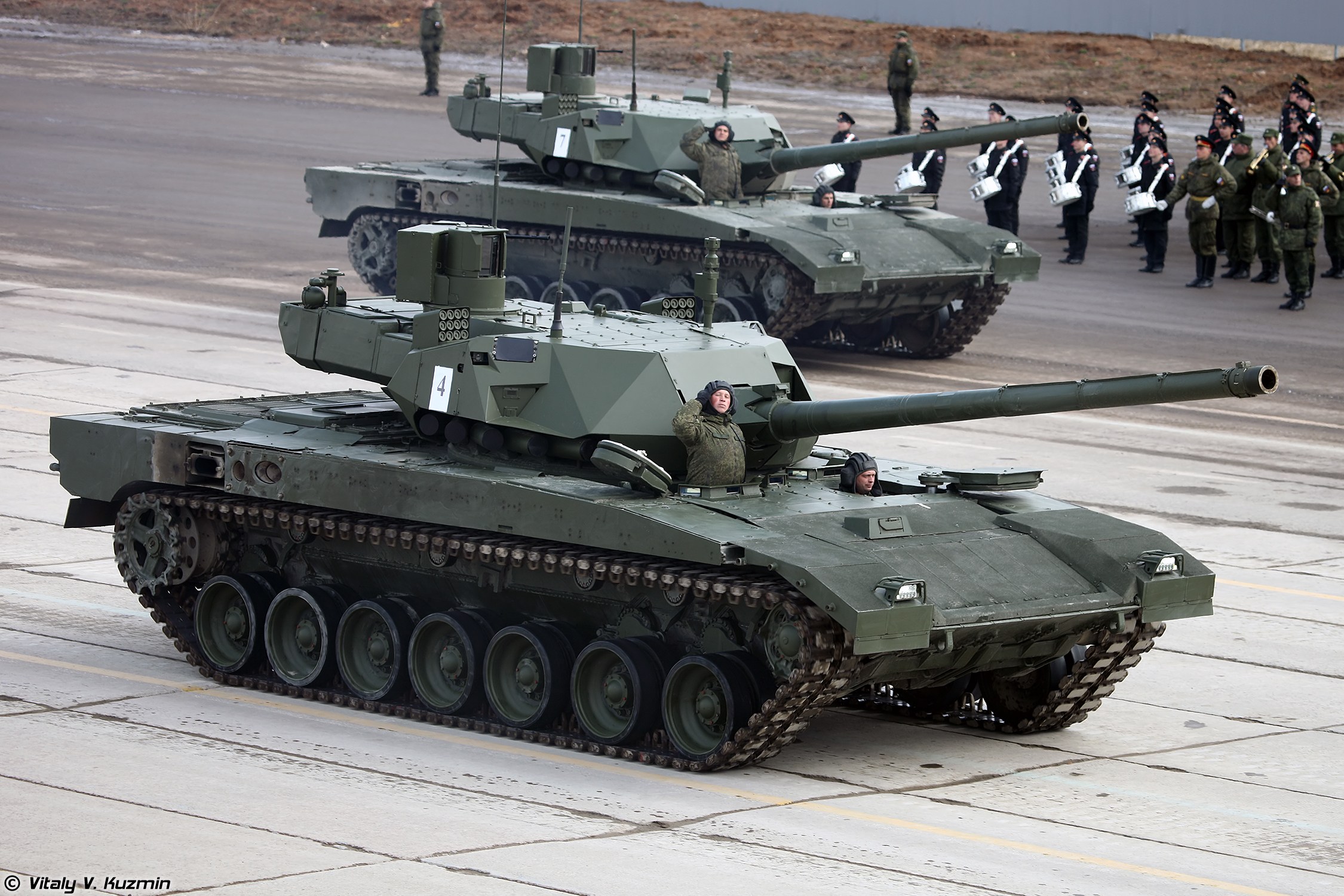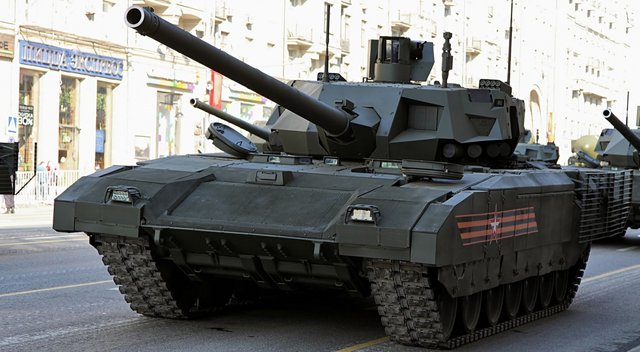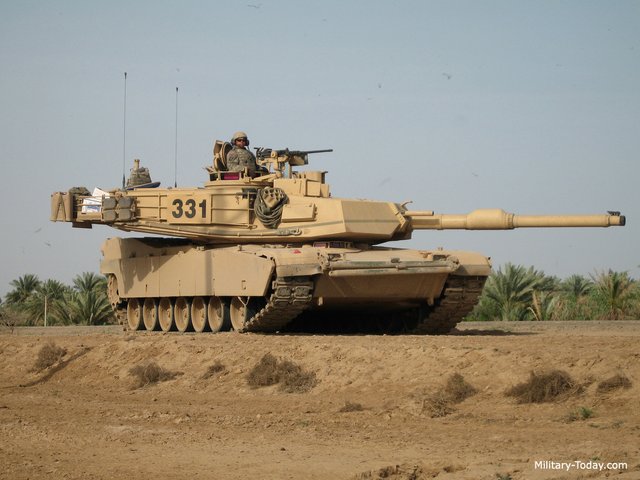

With the end of the Cold War and the collapse of the Soviet Union, the specter of the Russian giant armor became the past. But Russia then continued to develop new tanks and armored vehicles.
While the United States continues to rely on upgraded versions of the M1 Abrams Cold War era tank and Bradley armored fighting vehicle.
Russian Armata is the last technologically-born Russia in terms of family of armored combat vehicles. This heavy vehicle breaks away from the Soviet practice of always developing a relatively simple, inexpensive but specialized platform.
In fact, Armata comes in various versions as many people say is no longer necessary for now by Americans. Armata branched off the main battle tanks, infantry vehicles, self-propelled artillery and a number of other variants. The most prominent is the main T-14 Armata fighter tank.
Soviet-era tanks or previous Russian tanks, taking design cues from Red Army lessons learned against the Wehrmacht during World War II. Soviet tanks are relatively simple, very rugged and produced in bulk quantities.
Soviet tanks have differences with western tanks because they rely on quantities and pay less attention to crew safety. Russian tanks including the T-90 also follow this basic design philosophy.
The T-14, judging by its appearance, seems to have abandoned the traditional Russian way of designing armored vehicles. The simple concept is abandoned and the T-14 comes with a number of very sophisticated features that have never been applied in previous tanks in the world.
In addition, for the first time, the Russian military appears to have placed the crew's security as the main thing by placing a separate crew space with the main part of the tank.

In other words the tank tower is controlled from a separate place. The advantage is that the crew compartment is physically separated from ammunition. Tanks are also equipped with armor that is coated with passive defense combined with reactive steel and active protection systems.
The Afghan active protection system system is thought to include millimeter wave radar to detect, track and intercept incoming shots. Taken on an aggregate basis, Armata offers far better defense than any Russian or Soviet tank.
The unmanned tower offers guarantee of crew safety but also has weaknesses. The crew should fully rely on their censorship for situational awareness and targeting.
That's not a big weakness, but it can be a problem if the sensor or electronic parts hit by the opponent's shot until it breaks. If that happens the tank is completely blinded and deaf to easily the enemy will slaughter it.
What if the T-14 Armata against M1A2 SEP v2 or more sophisticated M1A3 Abrams? For a moment we discussed Abrams first. This tank is recognized or not has been proven in the field of battle, reliable design that is still being improved. M1A3 will become lighter and more mobile.
The US Army also plans to replace the M256 120mm smoothbore gun with a lighter version.
One very dangerous feature is the ability of Armata to destroy targets at distances of up to 12 kilometers or 7.4 miles.
For years, Russia has been arming its tanks with laser missiles that can be fired from the main gun. The first generation missile, Kobra HEAT 9M112, was installed in a T-80 tank. Cobras have a distance of 4 kilometers, or 2.5 miles, and can penetrate up to 700 millimeters of armor.
The current missile, 9M119 Reflecks, has a range of 3.1 miles and can penetrate up to 900 millimeters of armor. This is Reflecks action:
Armata will initially be armed with a better version of Reflek known as 9M119M1. But a new missile called Sprinter 3UBK21 has been planned, and this is a weapon with a distance of 7 miles more. Penetration of armor is unknown but possibly at least equivalent to Reflecks.
In contrast, the M1 Abrams' M256 120m millimeter smoothbore cannon has a maximum effective range of between 3 km (1.86 miles) and 4 km (2.48 miles). In military language, Armata can easily fight against M1, destroying American tanks comfortably before they can reach the firing range.

It's just that in real-world war situations, there are rarely any situations where two objects on land are visible to each other at a distance of 7.5 miles. Many things that will protect such as, trees, buildings, elevation changes, and other terrain show all the conspiracies to block visibility at ground level.
Even on the plains of Kansas, the Russian steppes, and the Sinai desert, there are rarely any places where two objects are visible at a distance of three or four miles.
Even if Armata managed to lock the Abrams in the extreme range, American tanks would not be easy to destroy. Armor Abrams, reinforced with a depleted uranium layer and now also designed with reactive armor that is widely regarded as the best in the world.
Reactive weapons are very useful to fight the warhead of the shaped charge that Sprinter brought. The US Army also plans to install active protection systems (APS) on the Abrams.

The APS upgrade will consist of a radar that scans incoming threats in all directions. When detecting APS targets launch interceptors to detect and kill missiles and incoming missiles.
One potential scenario that can take advantage of Sprinter's range is as an anti-air weapon. Sprinter is believed to have air defense capabilities and many of the country's clients who might want to buy Armata are afraid of Western attack helicopters such as Apache Guardian AH-64E.
Fixed wing aircraft, including unmanned aircraft, are also likely to be targeted. Although Sprinter is planned as an anti-tank weapon, it is actually more useful as an anti-air weapon.
▶️ DTube
▶️ IPFS